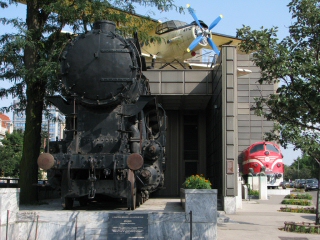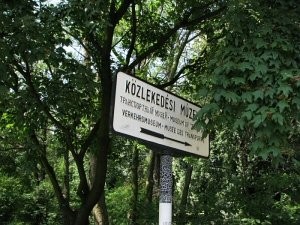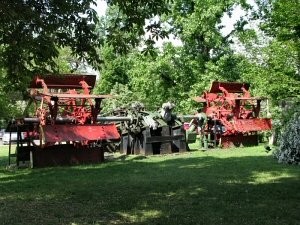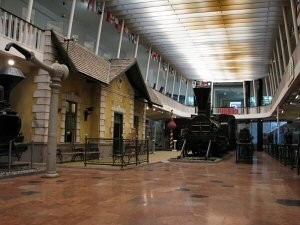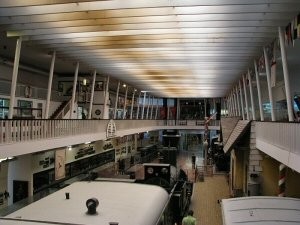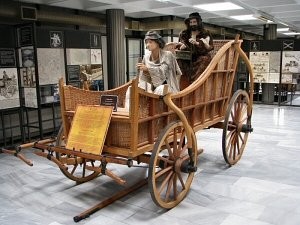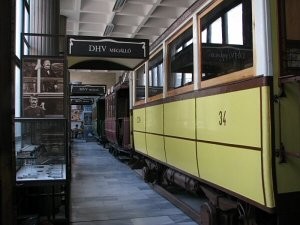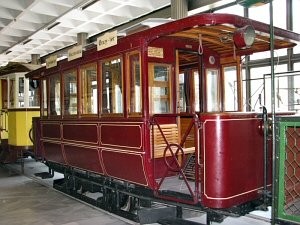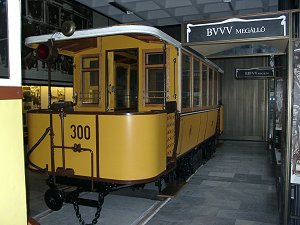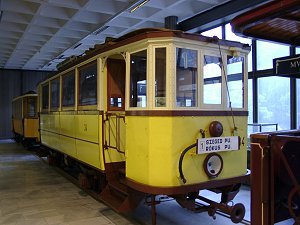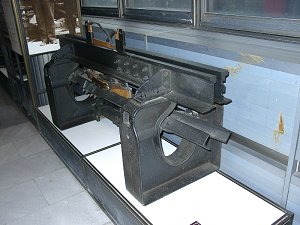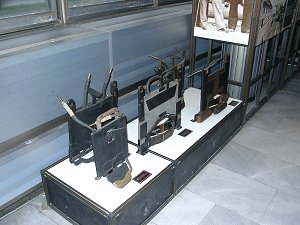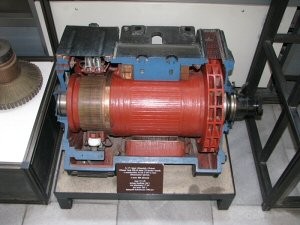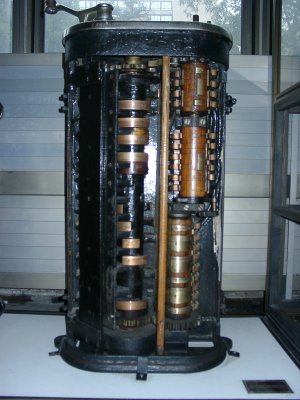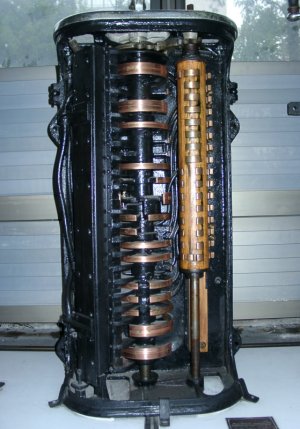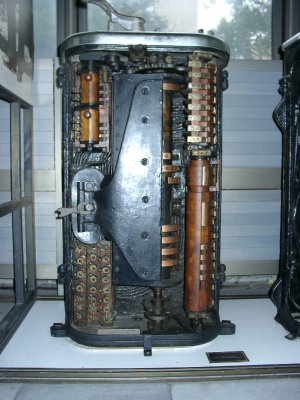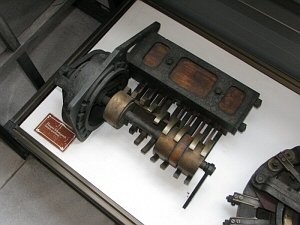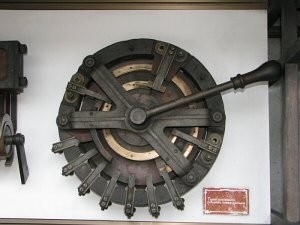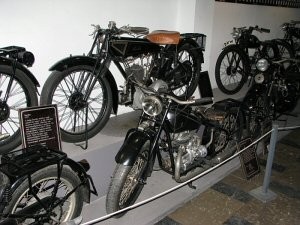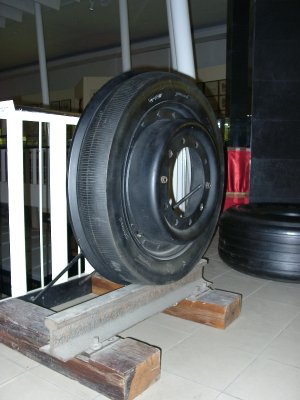budapest
other hungarian
close-up
lost rails
other countries
Warning: this page is now out-of date! The museum's material has been repatriated into several locations, and the building complex has been torn down. When all is good, it will reopen at a new location with more space, but as to when, nobody knows.
If you're staying in Budapest for more than just a few days, or the weather is bad for taking photos or hiking through the city, you can also go the the Transport Museum in Városliget. Albeit it's a relatively small display (after all, displaying is just one of the many tasks of a museum), and also a bit old-fashioned if you compare it to better-financed institutions of the world, it might still be of interest to you!
The site of today's museum was built in 1896 as the "Transportation Hall" for the Milleneum Exhibition. Three years later the Royal Hungarian Transport Museum was opened in the same building. Unfortunately in 1944 the museum has sustained damage during the bombing of Budapest - only about one third of the exhibits were spared. The building was restored in a simple style without its ornaments and dome (here's a link how the building originally looked like) and reopened in 1966. Due to the small space, most exhibits in the area of railway and shipping are scale models - of course the museum's collection of 1:5 steam engine models was famous even before the war.
Transport
Museum in bigger resolution
The museum can be reached by walking through the park from the Széchenyi fürdő station of the Shallow Subway, or with trolley bus line 70 (stop name: Hermina út), 72 and 74 (stop name: Erzsébet királyné útja), by walking a bit from tram line 1 (stop name: Erzsébet királyné útja) or by walking quite a bit from the buses 5, 7, 173, 173E (stop name: Zugló vasútállomás). The entrance on the side facing the park, and not right at the trolley bus lines.
The vicinity of the museum is shown by old roads signs, and you will also notice its proximity because of several transport-related items scattered around, like pieces of bridges, ships, an old steam engine, an old railway coach operating as buffet - not to mention the double-decker airplane on the roof :)
The main hall (to the left of the entrance) has several railway-related items on the ground floor, like a replica of an old railway station, steam engines and railway coaches (left). The balcony around it (forming the first floor) is all about sailing and ships, although mostly in models.
The new wing (built in the 1980s) introduces the history of road and bridge construction/engineering, plus vehicular and public traffic. The model to the left shows how a road was built in the roman era - this was one of my favorite exhibits when I was a child :) To the right: the Ganz mid-entrance MU trams are only presented in small size - no real vehicle of this highly interesting type was preserved.
Now, one of the very few hungarian words used in english and other foreign languages is "coach" (Kutsche/coche/etc). It is derived from the name of the hungarian village Kocs, where a very comfortable and forward design of a carriage was manufactured in the 15th century. To commemorate this, the museum has a selection of carts, carriages and wains on display.
For tram enthusiasts, the most interesting part is quite possibly the ground floor of the new wing (which feels quite basement-ish due to the irregular segmentation of the building), which houses a few trams. As mentioned earlier, the real urban transit museum is now the Urban Public Transit Museum in Szentendre, but this display also features interesting exhibits. For example the oldest surviving electric streetcar of Budapest, seen on the photo to the right, with the fleet number "1". In reality this car was number 92, built around 1890, and renumbered to this distinguished number in the 1910s (here's a photo of the real number 1, taken at Kálvin tér in 1889).
To the left: trailer number 300 of the BURV, built in 1896. To the right: number 34 of Szeged, built in 1913.
The small exhibits are also very interesting. To the left we see a cutaway of the Budapest electric tram conduit system designed by Siemens&Halske in the late 1880s. In contrast to other conduit systems, it was located underneath one of the running rails, and not between the two rails of the track. Also, unlike in Vienna, where they used an improved version of the Budapest conduit with the running rails used for current return, both positive and negative electric poles were located in the shaft, by using two angle-irons, one for each pole. To the right we see different current collectors for this system, which proved to be problematic at the start, as the current collector could only be raised (removed) at designated places. Later they introduced more flexible current collecting "ships", which could be raised anytime, anywhere.
To the left: different kinds of resistors used on trams. To the right: the cutaway of a motor of a UV tramcar.
Controller switches of different makes: a "small Siemens" (Siemens-Halske SH 902), a "large Siemens" (Siemens-Schuckert SS 907), and a "Unió" (AEG Union).
Some older switching equipment can also be seen: a reel controller and a dial controller, both from Siemens. These were used on the earliest electric tram types.
The other end of the museum (to the right of the entrance - it's wise to keep the ticket, because they might ask for it again) is a very dense collection of old cars and motorcycles. In fact it's a pile of treasures. Too much to see in such a small place - and this is relaly just a small part of the collection of the museum :(
In conclusion: two not-everyday transport objects. To the left: a rubber rail tyre by Michelin, probably from one of the "Micheline" rubber-tyred vehicles (thanks to Matthew Geier for the identification of this piece!). To the right: the Soyuz 7K-T reentry module of the Soyuz-35 spacecraft, with which Bertalan Farkas, the first hungarian cosmonaut returned to Earth after spending 8 days in space on the Salyut-6 space station. A real claustrophobic piece of equipment (click here for a panorama view from inside), but at the same time also very interesting!
Back to the top Back to the main page
